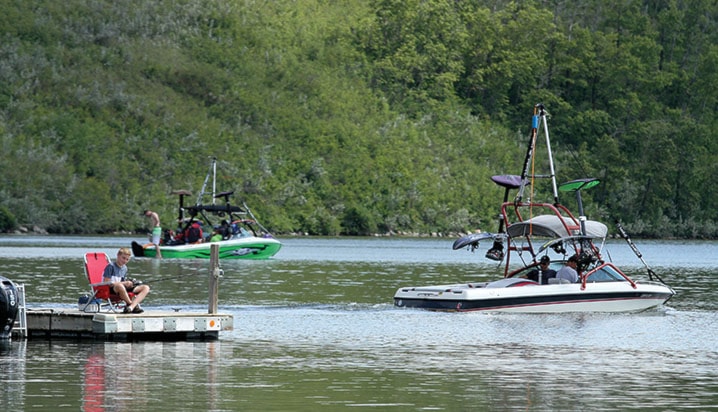A second Central Alberta lake has been found to have a blue-green algae bloom this summer.
Alberta Health Services issued an advisory this week that the algae has been identified in areas of Pine Lake. Algae blooms move around bodies of water, depending on weather and wind.
About a month ago a similar advisory was issued for Alix Lake. Over the years Pine Lake has seen a number of blue-green algae (cyanobacteria) advisories, which usually remain in effect until cooler weather in the fall.
Areas of Pine Lake where the bloom is not visible can still be used for recreational purposes, even while the advisory is in place.
People who come in contact with the visible algae, or who ingest water containing it, may experience a variety of symptoms such as skin irritation, rash, sore throat, sore red eyes, swollen lips, fever, nausea and vomiting and/or diarrhea.
These symptoms usually appear within one to three hours and resolve in one to two days. Symptoms in children are often more pronounced however, all humans are at risk.
People living near or visiting the lake are advised to take precautions.
l Avoid all contact with blue-green algae blooms. If contact occurs, wash with tap water as soon as possible.
l Do not swim or wade (or allow your pets to swim or wade) in any areas where the algae is visible.
l Do not feed whole fish or fish trimmings from the lake to your pets.
l Consider limiting human consumption of whole fish and fish trimmings from the lake, as it is known that fish may store toxins in their liver. (People can safely consume fish fillets from the lake).
Boiling lake water will not remove the toxins produced by blue-green algae. An alternate source of drinking water should also be provided for pets and livestock while the advisory is active.
Blue-green algae is naturally occurring, appearing like scum, grass clippings, fuzz or globs on the surface of water. It can be blue-green, greenish-brown, brown, and/or pinkish-red, and often smell musty or grassy.
Anyone who suspects a problem related to cyanobacteria, or wants further information on health concerns about it can call Health Link at 811. Additional information is also available online, at albertahealthservices.ca/bga.asp
